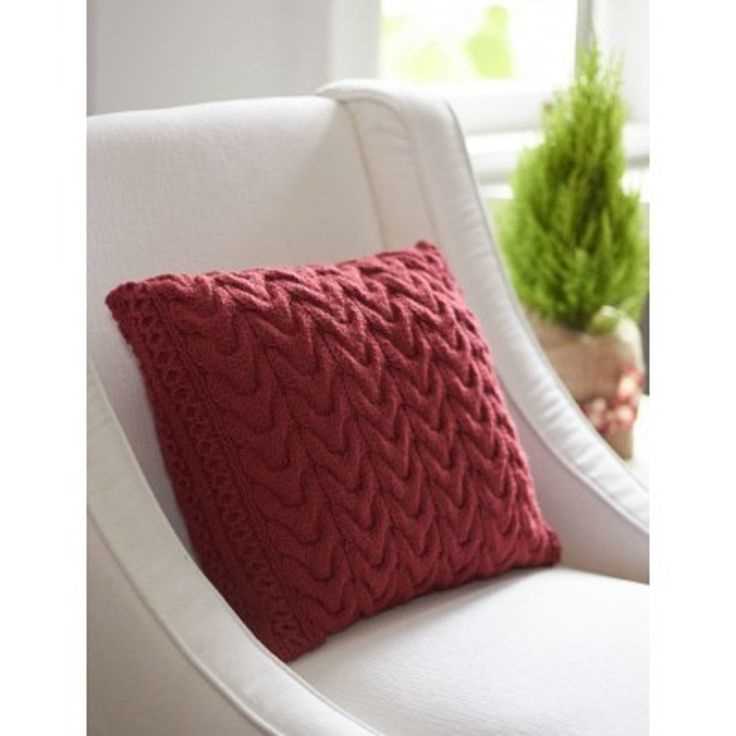
Knitting is a popular and versatile craft that allows you to create beautiful and functional items. One of the most popular knitting projects is cushions. Cushions can add a touch of coziness and style to any home decor, and they also make great gifts.
There are countless cushion knitting patterns available, ranging from simple and beginner-friendly designs to intricate and challenging patterns. Whether you are new to knitting or a seasoned pro, there is a cushion pattern out there for you.
When choosing a cushion knitting pattern, you can consider factors such as the level of difficulty, the size and shape of the cushion, the type of stitch pattern or texture you want to create, and the type of yarn you want to use. You can also customize your cushion by adding buttons, ribbons, or other embellishments.
Knitting cushions is not only a creative and relaxing way to spend your time, but it also allows you to create unique, one-of-a-kind pieces that reflect your personal style. So why not pick up your knitting needles and start creating beautiful cushions for your home or as gifts for your loved ones?
Basics of Cushion Knitting
Knitting cushions is a great way to add a personal touch to your home decor. Whether you’re a beginner or an experienced knitter, creating your own cushions allows you to express your creativity and customize your space. Here are some basics to get you started on your knitting journey.
Choosing the right yarn: When it comes to knitting cushions, the type of yarn you use can make a big difference in the final result. Chunky or bulky weight yarns are often recommended for cushion knitting, as they create a thick and cozy fabric. However, you can also experiment with different yarn weights to achieve different textures and effects.
Understanding gauge: Gauge refers to the number of stitches and rows per inch that you achieve with a particular yarn and needle size. It’s important to check your gauge before starting a cushion project, as it can affect the size and fit of the finished cushion. To determine your gauge, knit a swatch using your chosen yarn and needles, and measure the number of stitches and rows per inch.
Choosing the right needles: The size and type of knitting needles you use can also affect the outcome of your cushion. For chunky yarns, you may want to use larger needles to create a looser fabric. Circular needles can be useful for larger projects, as they allow you to hold more stitches. Ultimately, the choice of needles depends on your personal preference and the desired outcome of your cushion.
Basic knitting stitches: To knit a cushion, you’ll need to know a few basic stitches. The most common stitches used in cushion knitting include knit stitch, purl stitch, and rib stitch. Knit stitch creates a smooth “V” pattern, while purl stitch creates a bumpy texture. Rib stitch alternates between knit and purl stitches and is often used for borders or decorative patterns.
Pattern selection: Once you have mastered the basic knitting stitches, you can start exploring different cushion knitting patterns. There are countless patterns available online or in knitting books, ranging from simple designs to intricate lace patterns. Consider the style and theme of your home decor when choosing a pattern, and don’t be afraid to experiment with colors and textures to create a unique cushion that fits your personal style.
Finishing touches: After completing the knitting portion of your cushion, you’ll need to finish it off. This typically involves seaming the sides together and adding a closure, such as buttons or a zipper. You can also choose to add embellishments, such as pom poms or tassels, to give your cushion a more personalized touch. Remember to follow the pattern instructions for finishing details and always make sure to weave in any loose ends to secure your work.
Popular cushion knitting stitches
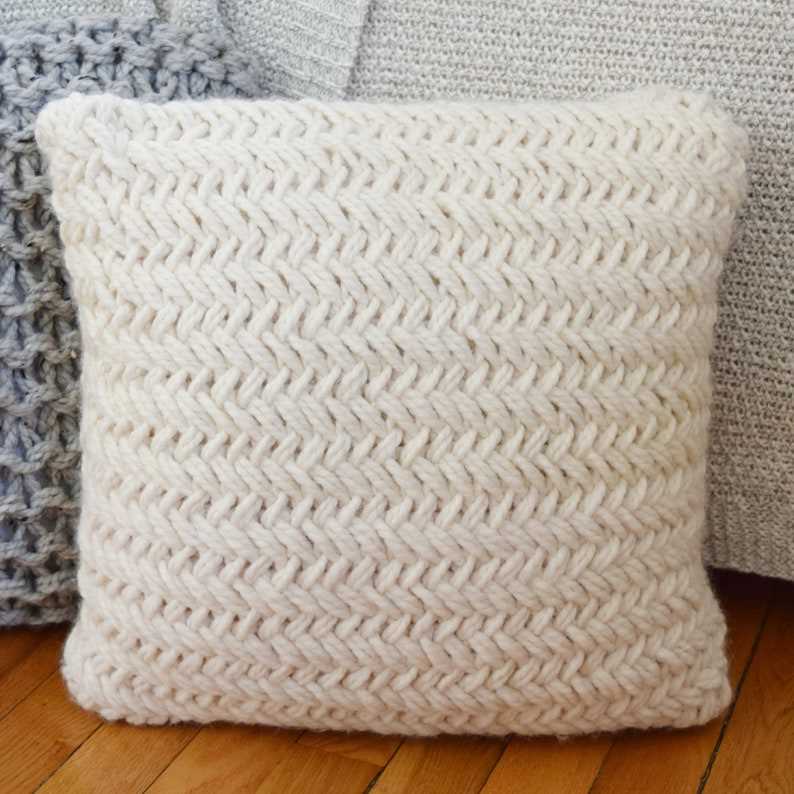
When it comes to creating beautiful and unique cushion covers, the choice of knitting stitches can make all the difference. There are numerous popular stitches that can add texture, depth, and visual interest to your cushion projects. Whether you prefer classic or more modern designs, here are a few popular cushion knitting stitches to consider:
Garter Stitch
The garter stitch is one of the most basic and common knitting stitches. It creates a fabric that is made up entirely of knit stitches on both sides, resulting in a textured and squishy fabric. This stitch is great for beginners and can add a cozy and timeless look to your cushion covers.
Cable Stitch
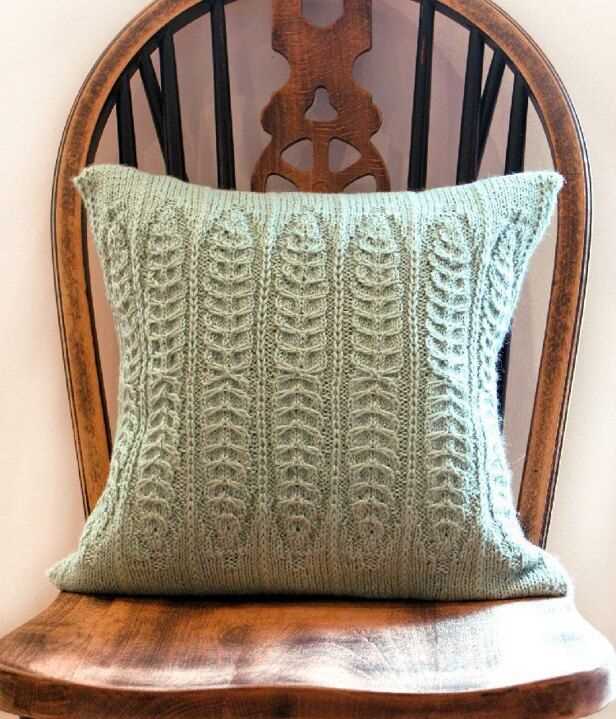
The cable stitch creates a beautiful intertwined pattern that adds a touch of elegance to any cushion cover. It involves crossing stitches over each other to create stunning designs. Cable stitches can range from simple twists to more intricate patterns, giving you endless possibilities to create unique and eye-catching cushions for your home.
Seed Stitch
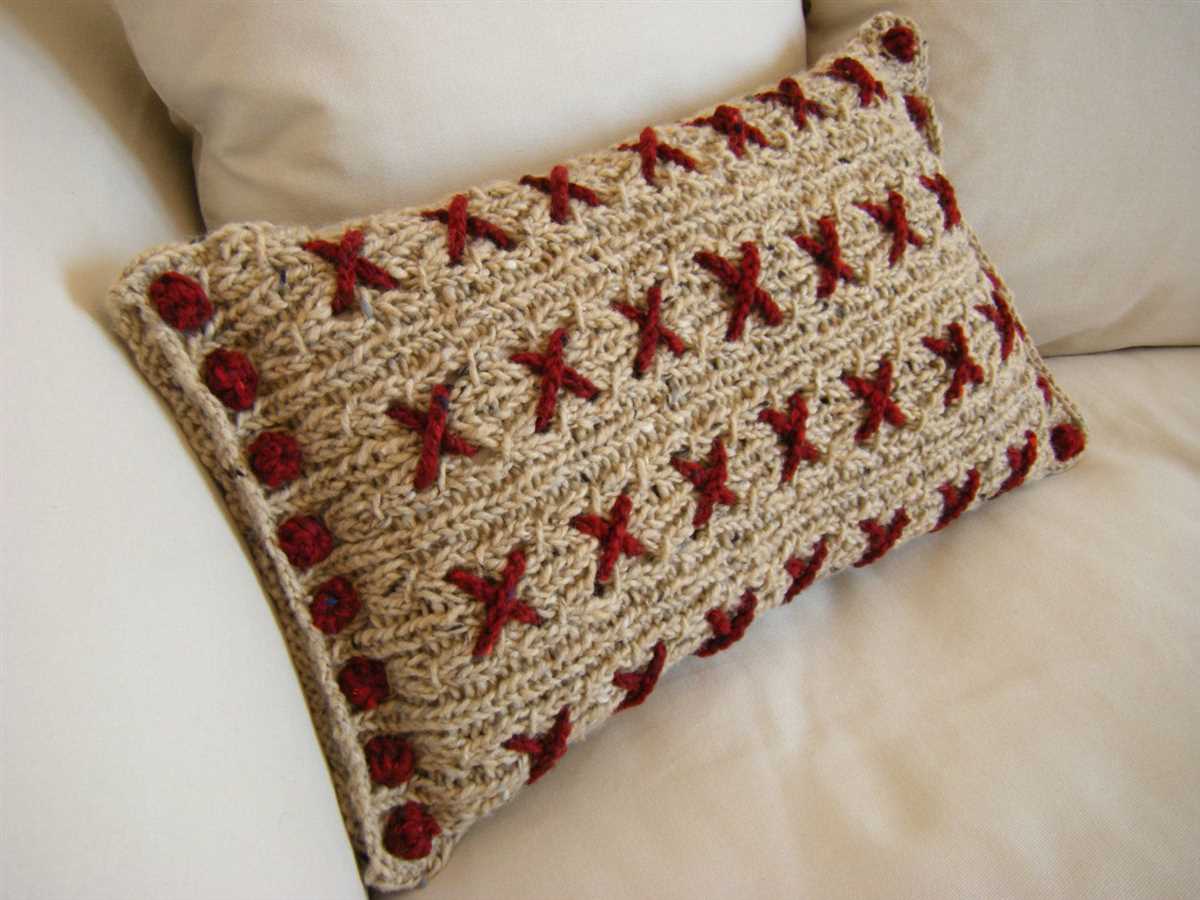
The seed stitch is a versatile and visually appealing knitting stitch that creates a textured pattern by alternating knit and purl stitches. This stitch is perfect for adding depth and interest to your cushion covers. You can use the seed stitch on its own or combine it with other stitches to create intricate patterns.
Rib Stitch
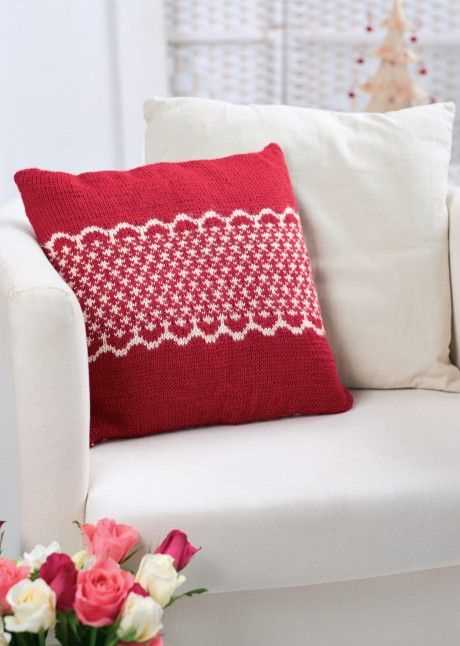
The rib stitch is commonly used for creating cuffs, collars, and hems, but it can also be a great choice for cushion covers. This stitch creates a fabric that is stretchy and springy, making it ideal for cushions that will be used and cuddled with. You can experiment with different rib stitch patterns, such as the classic 1×1 or 2×2 rib, to achieve different effects.
These are just a few examples of popular cushion knitting stitches, but the possibilities are endless. Whether you’re a beginner or an experienced knitter, these stitches can help you transform your cushion covers into unique and beautiful pieces that will add a cozy touch to your home.
Beginner-friendly cushion knitting patterns
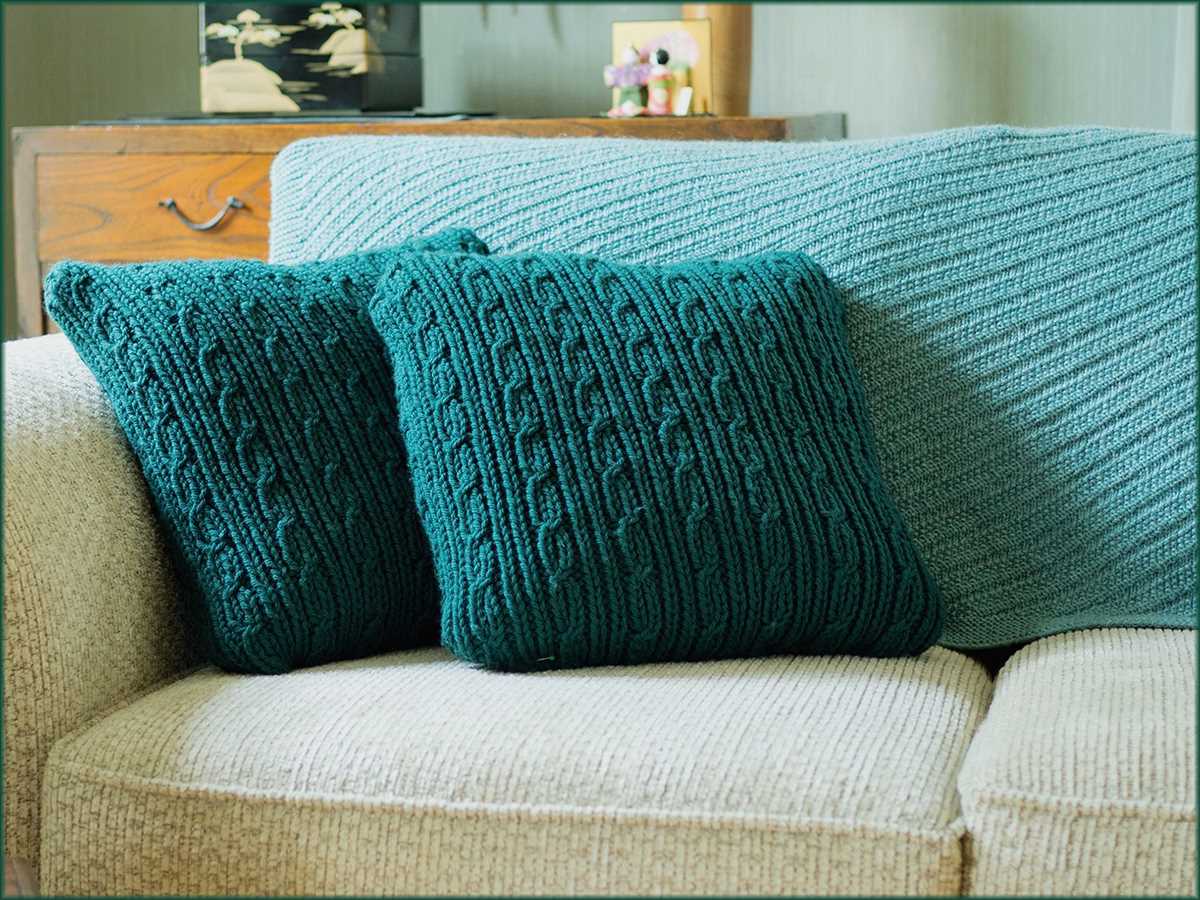
If you’re new to knitting and want to try your hand at making cozy cushions for your home, there are plenty of beginner-friendly patterns available. These patterns are designed with simplicity in mind, so even if you’re a complete novice, you’ll be able to create beautiful, soft cushions to add a touch of warmth to your living space.
One of the easiest cushion knitting patterns for beginners is a basic garter stitch cushion. The garter stitch is created by knitting every row, which makes it a great choice for beginners as it doesn’t require any purling. You can choose a chunky yarn in your favorite color and use large knitting needles to quickly knit up this simple but stylish cushion.
Chunky cable cushion
If you’re ready to take your knitting skills to the next level, you might want to try a chunky cable cushion pattern. Cables can look complex, but they’re actually easier to knit than you might think. This pattern will guide you through the process of creating cables using simple techniques, and the chunky yarn will add extra coziness to your cushion.
Colorful striped cushion

If you’re feeling adventurous and want to play with different colors, a colorful striped cushion pattern might be the perfect choice for you. This pattern allows you to experiment with different color combinations and create a unique, eye-catching cushion. You can choose to use two or more colors and alternate them in different striped patterns, creating a fun and vibrant cushion that will brighten up any room.
These beginner-friendly cushion knitting patterns are a great way to get started with knitting and create something practical and beautiful for your home. Whether you prefer a simple garter stitch cushion, a chunky cable cushion, or a colorful striped cushion, you’ll be able to enjoy the process of knitting and the satisfaction of creating something with your own hands.
Advanced Cushion Knitting Patterns
For experienced knitters looking for a challenge, advanced cushion knitting patterns offer a unique and intricate design to showcase your skills. These patterns often incorporate advanced techniques such as colorwork, lace knitting, and complex stitch patterns to create stunning and sophisticated cushions.
Colorwork Cushion: One popular advanced cushion knitting pattern is the colorwork cushion. This pattern involves using multiple colors of yarn to create intricate geometric patterns or vibrant motifs. Fair Isle and intarsia techniques are commonly used to achieve stunning colorwork designs. Knitters can choose from a variety of color combinations to create a truly unique and eye-catching cushion.
Lace Cushion: Lace knitting can add a delicate and elegant touch to any cushion. Advanced lace cushion knitting patterns often feature intricate lace stitch patterns, such as leaf motifs or delicate floral designs. Knitters must be comfortable with lace knitting techniques, including yarn overs and decreases, to successfully complete these patterns.
Textured Cushion: Advanced textured cushion knitting patterns focus on creating rich and tactile designs using various stitch patterns. Cables, bobbles, and twisted stitches are commonly used to add depth and dimension to the cushion. These patterns often require advanced knitting skills and the ability to read complex stitch charts.
Combination Cushion: Some advanced cushion knitting patterns combine multiple techniques, such as colorwork and lace, to create truly unique and intricate designs. These patterns offer a great opportunity for experienced knitters to showcase their skills and create a one-of-a-kind cushion. The combination of different techniques adds visual interest and complexity to the finished cushion.
Whether you’re looking to challenge yourself or simply enjoy the process of knitting intricate patterns, advanced cushion knitting patterns offer a wide range of options. From colorwork to lace, these patterns allow experienced knitters to create stunning and sophisticated cushions that will be admired for years to come.
Knitting materials for cushion patterns
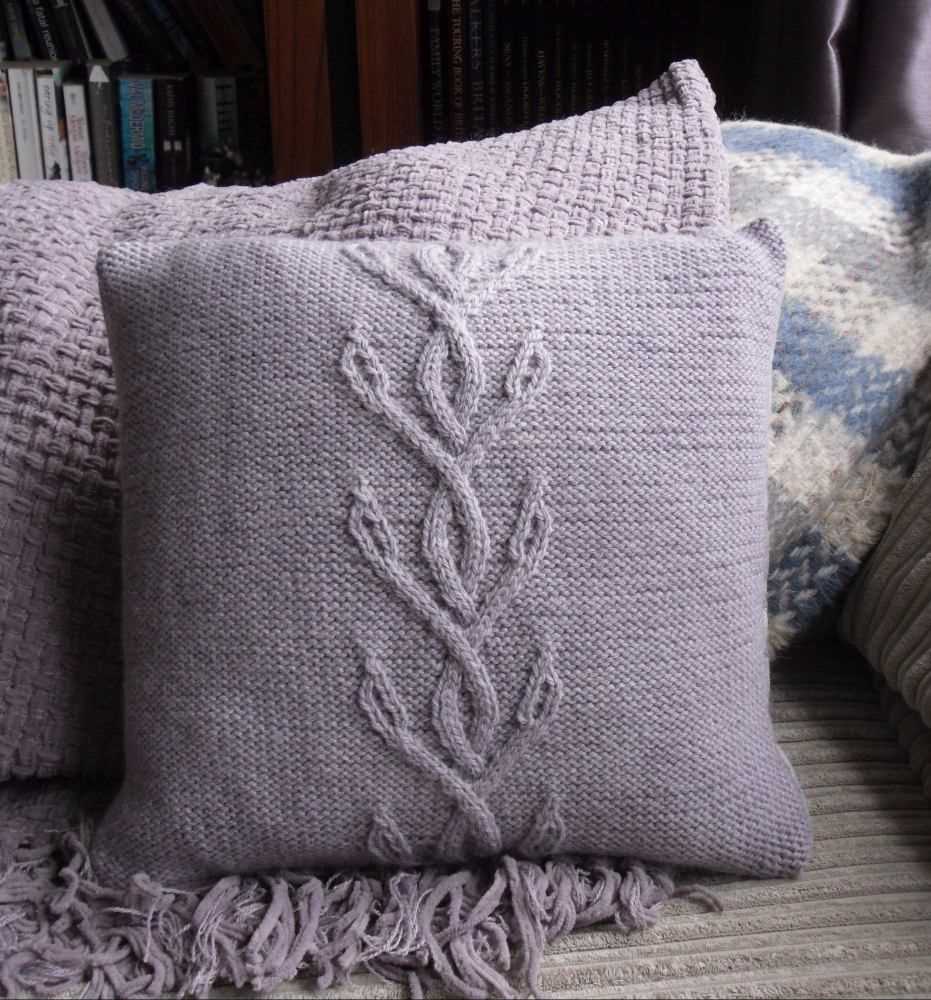
Knitting materials for cushion patterns are essential for creating beautiful and cozy cushions for your home. When choosing materials for knitting cushions, it is important to consider the texture, durability, and color of the yarn.
Yarn: The yarn used for knitting cushion patterns should be soft and comfortable, making your cushions cozy and inviting. Natural fibers like cotton or wool are popular choices for cushion knitting as they provide warmth and breathability. Acrylic yarn is also a good option as it is durable and easy to care for, making it ideal for cushions used in high-traffic areas.
Needles: The right knitting needles are crucial for achieving the desired gauge and texture. For cushion patterns, it is often recommended to use larger needles to create a looser and more relaxed fabric. Circular needles can be a good choice for knitting larger cushions as they allow for more stitches and easier manipulation of the fabric.
Cushion forms: In addition to yarn and needles, cushion patterns also require cushion forms or inserts. These forms provide the structure and shape for the knitted cushion cover. They come in various sizes and shapes, allowing you to create cushions of different dimensions and styles.
Emb
Choosing the right yarn for your cushion
When it comes to knitting cushions, choosing the right yarn is essential to achieving the desired result. The yarn you choose will not only affect the overall appearance and texture of the cushion, but also its durability and ease of care. With so many options available, it can be overwhelming to make a decision. However, by considering a few key factors, you can find the perfect yarn for your cushion knitting project.
Consider the fiber content
One of the first things to consider when choosing yarn for your cushion is the fiber content. Different fibers have different properties that can greatly impact the final product. Natural fibers, such as cotton and wool, are popular choices for cushions as they are breathable, soft, and durable. Acrylic and polyester are synthetic fibers that are often used in cushion yarns due to their affordability and easy care. It’s important to think about the specific qualities you want in your cushion and choose a yarn that aligns with those needs.
Think about the weight and thickness
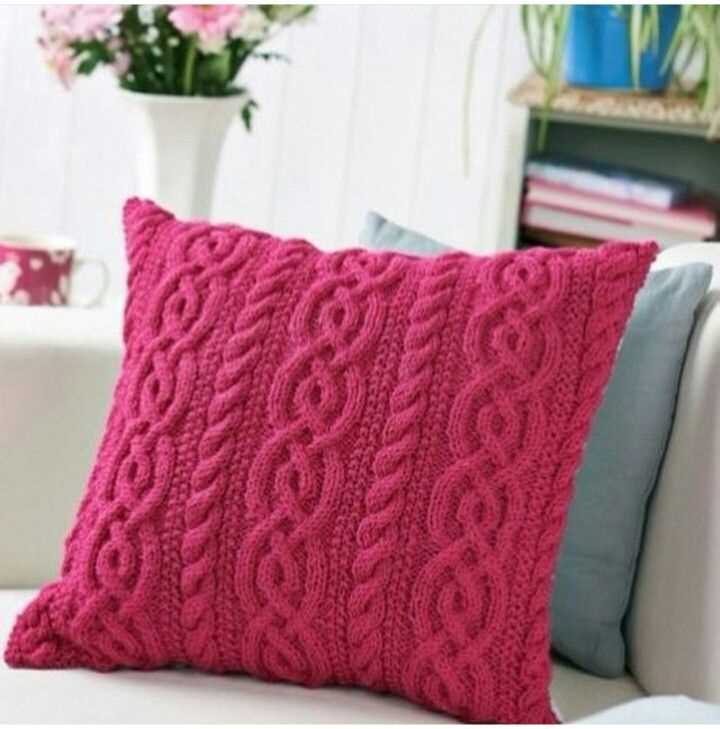
- Weight: The weight of the yarn refers to how thick or thin it is. For cushions, you will generally want to choose a medium to bulky weight yarn to create a cushion that is soft and cozy. However, if you prefer a more lightweight cushion, you can opt for a lighter weight yarn.
- Thickness: The thickness of the yarn will also impact the overall look and feel of your cushion. Thicker yarns will create a more chunky and textured appearance, while thinner yarns can give a more delicate and intricate look. Consider the design and style you want to achieve and select a yarn thickness that complements it.
Once you have considered these factors, it’s also a good idea to swatch your chosen yarn before starting your cushion project. This will give you an idea of how the yarn will knit up and allow you to adjust your needle size if needed. Ultimately, choosing the right yarn for your cushion will ensure that you create a beautiful and functional piece that you can enjoy for years to come.
Tips for achieving the perfect cushion shape
When knitting a cushion, it is important to pay attention to certain details in order to achieve the perfect shape. Here are some tips to ensure your cushion turns out just right:
1. Gauge and tension
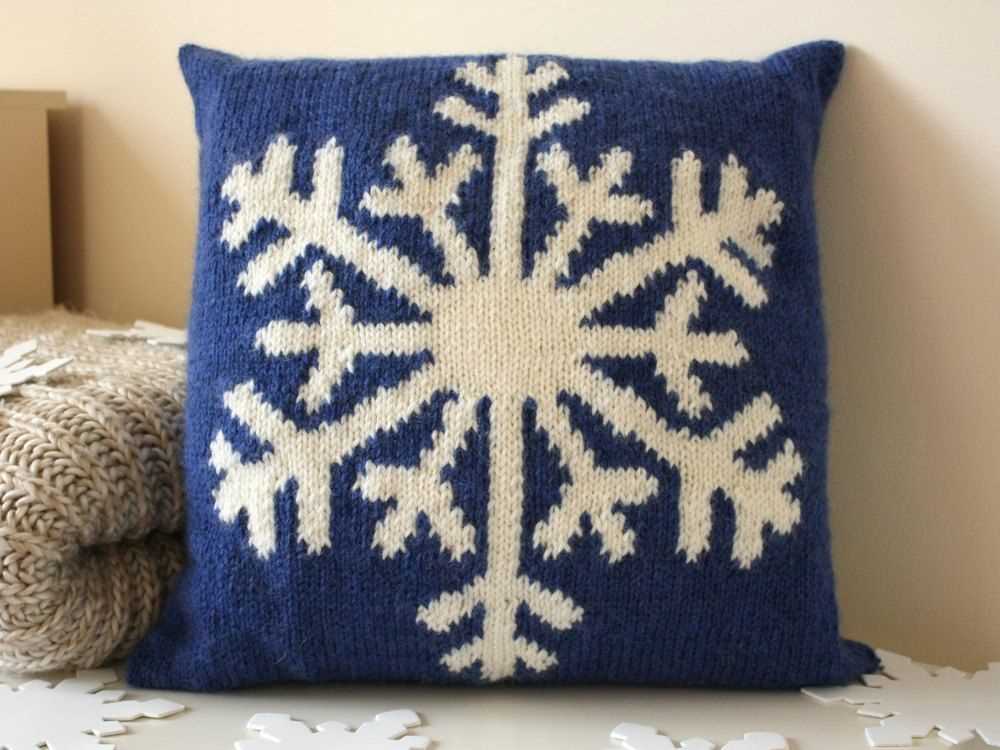
Before starting your project, it is crucial to check your gauge and tension. This will determine how your stitches and rows will fit together and ultimately affect the final shape of your cushion. Use the recommended needle size and yarn weight specified in the knitting pattern to achieve the desired gauge. Adjust your tension if needed, following the pattern’s instructions.
2. Blocking
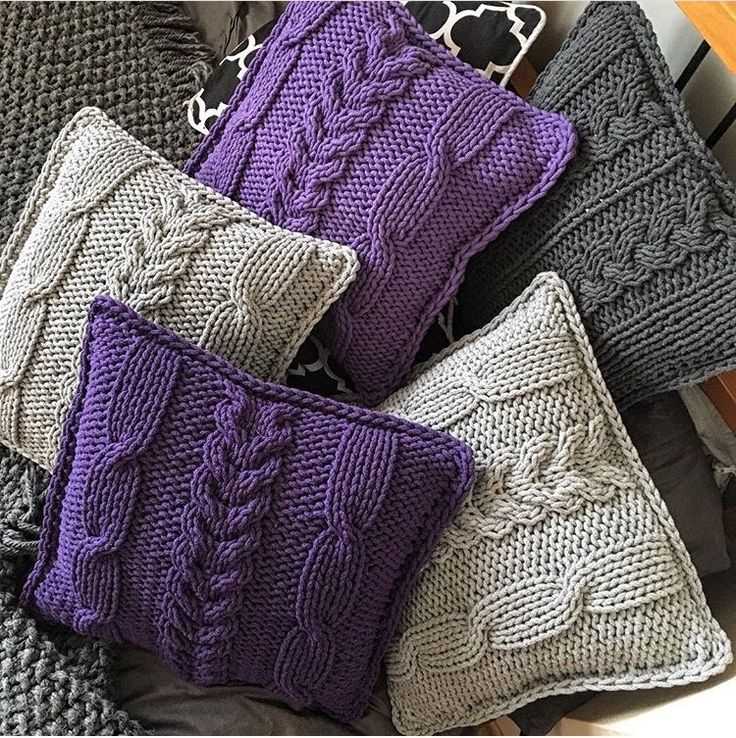
Blocking is an essential step that can greatly improve the shape and appearance of your cushion. Once you have completed knitting, wet block your cushion by gently soaking it in water and then laying it flat to dry. This process will help even out any irregular stitches, relax the fabric, and shape it to the desired dimensions. Use pins or a blocking board to stretch and shape the cushion while it dries.
3. Stuffing
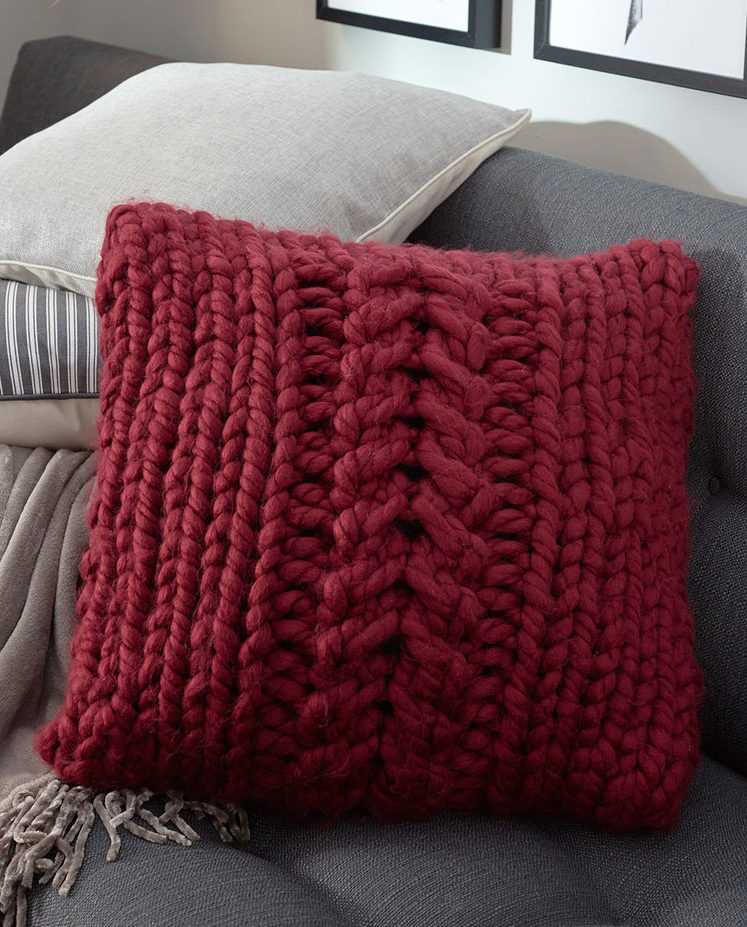
Choosing the right stuffing material is important for achieving the desired cushion shape. Opt for a stuffing that is soft and pliable, such as polyester fiberfill or wool roving. Take care not to overstuff the cushion, as this can lead to a bulky appearance and distort the shape. Gradually add stuffing and distribute it evenly throughout the cushion, ensuring it fills the corners and edges.
4. Seaming and finishing
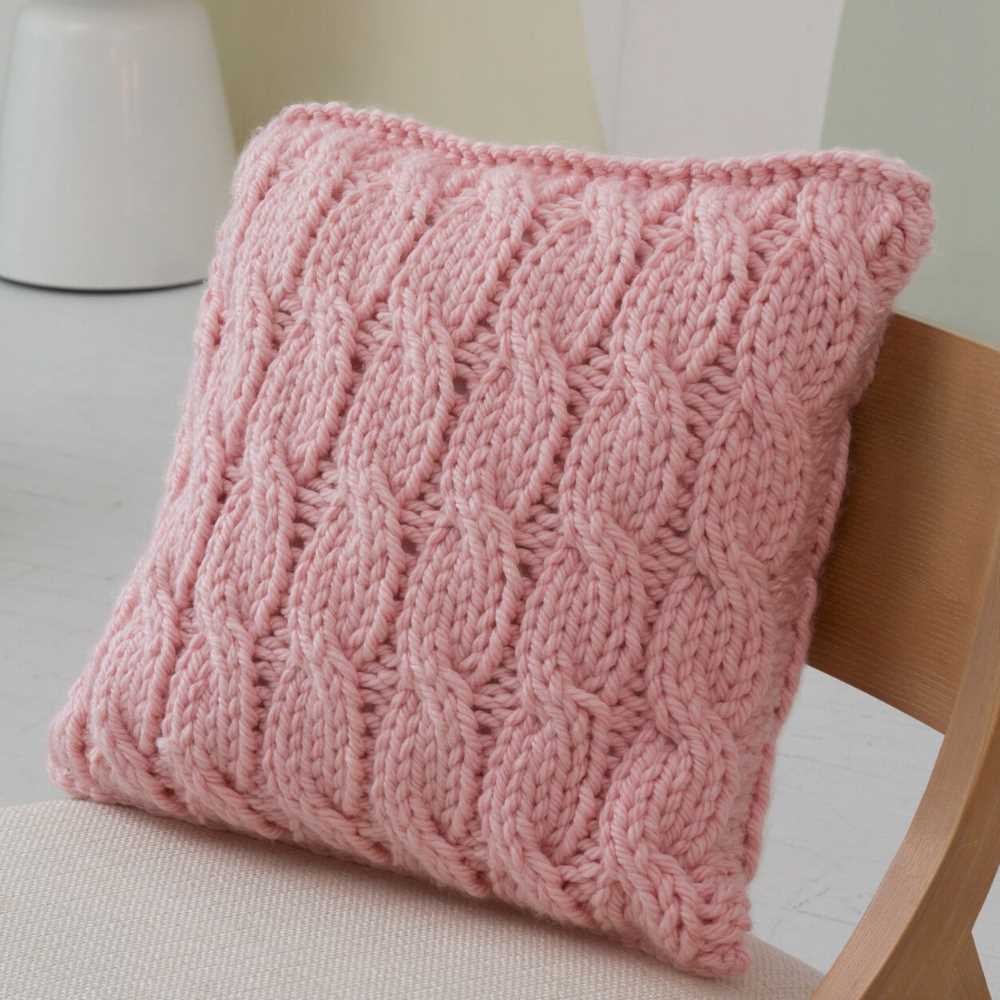
Proper seaming and finishing techniques can make a significant difference in the final shape of your cushion. Take your time to sew the seams neatly and securely, using the mattress stitch or any other suitable method for your pattern. Pay attention to aligning the edges and corners to ensure a clean and tidy finish. If desired, add decorative touches such as buttons, tassels, or edgings to enhance the overall appearance of the cushion.
With these tips in mind, you’ll be well on your way to creating the perfect cushion shape that will add comfort and style to any space.
Adding decorative elements to your cushion
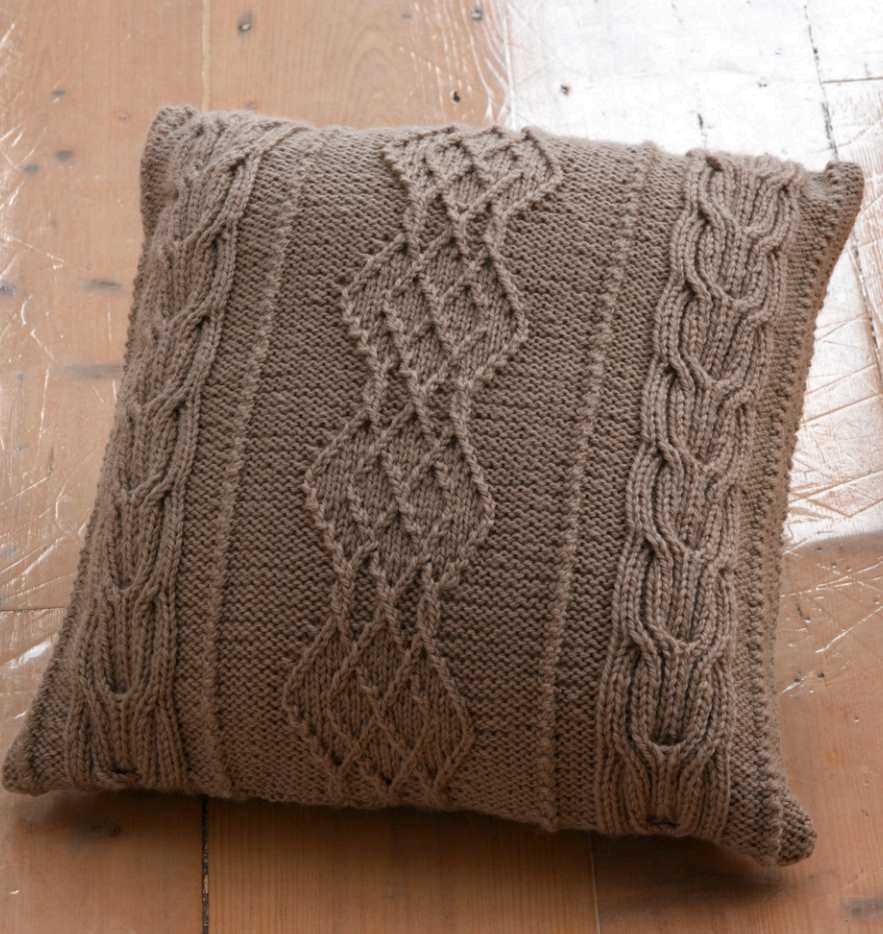
When it comes to knitting cushions, one way to make them truly unique and eye-catching is by adding decorative elements. These elements can range from simple embellishments to more intricate patterns, depending on your skill level and personal preferences. The addition of these decorative elements can transform an ordinary cushion into a stunning statement piece that adds charm and personality to any room.
1. Buttons: Buttons are a versatile and easy way to add interest to your cushion. You can sew them onto the front or back of the cushion in a symmetrical pattern, or create a more random and playful layout. Choose buttons in different sizes, colors, and textures to create a visually appealing design. Just make sure they are securely attached so they don’t come loose during use.
2. Cables: If you’re an experienced knitter looking for a challenge, adding cables to your cushion can create a stunning effect. Cables are created by crossing stitches over each other, resulting in a twisted pattern that adds depth and texture to your knitting. You can incorporate cables in various ways, such as in a central panel or as borders. Be sure to follow a pattern and use a cable needle to keep your stitches organized.
3. Fair Isle: Fair Isle knitting is a technique that involves using multiple colors in a single row to create beautiful and intricate patterns. This technique can be applied to cushion knitting to create stunning designs, ranging from simple geometric shapes to more complex motifs. Choose colors that complement each other and plan out your design before starting. It’s important to maintain an even tension with your yarn to create a crisp and professional-looking finish.
4. Appliques: Appliques are small decorative motifs that are attached to the surface of your knitting. These can be made separately and then sewn onto your cushion, or you can incorporate them as you knit. Appliques can be made from various materials, such as yarn, fabric, or even beads, and can take the form of flowers, animals, or any other design you like. They add a touch of charm and whimsy to your cushion.
By experimenting with these decorative elements, you can personalize your cushion knitting projects and create unique pieces that reflect your own style and creativity. Whether you choose to add buttons, cables, Fair Isle patterns, or appliques, the possibilities are endless. Have fun and let your imagination run wild as you create one-of-a-kind cushions that will bring joy and warmth to your home.
Knitting patterns for different cushion sizes
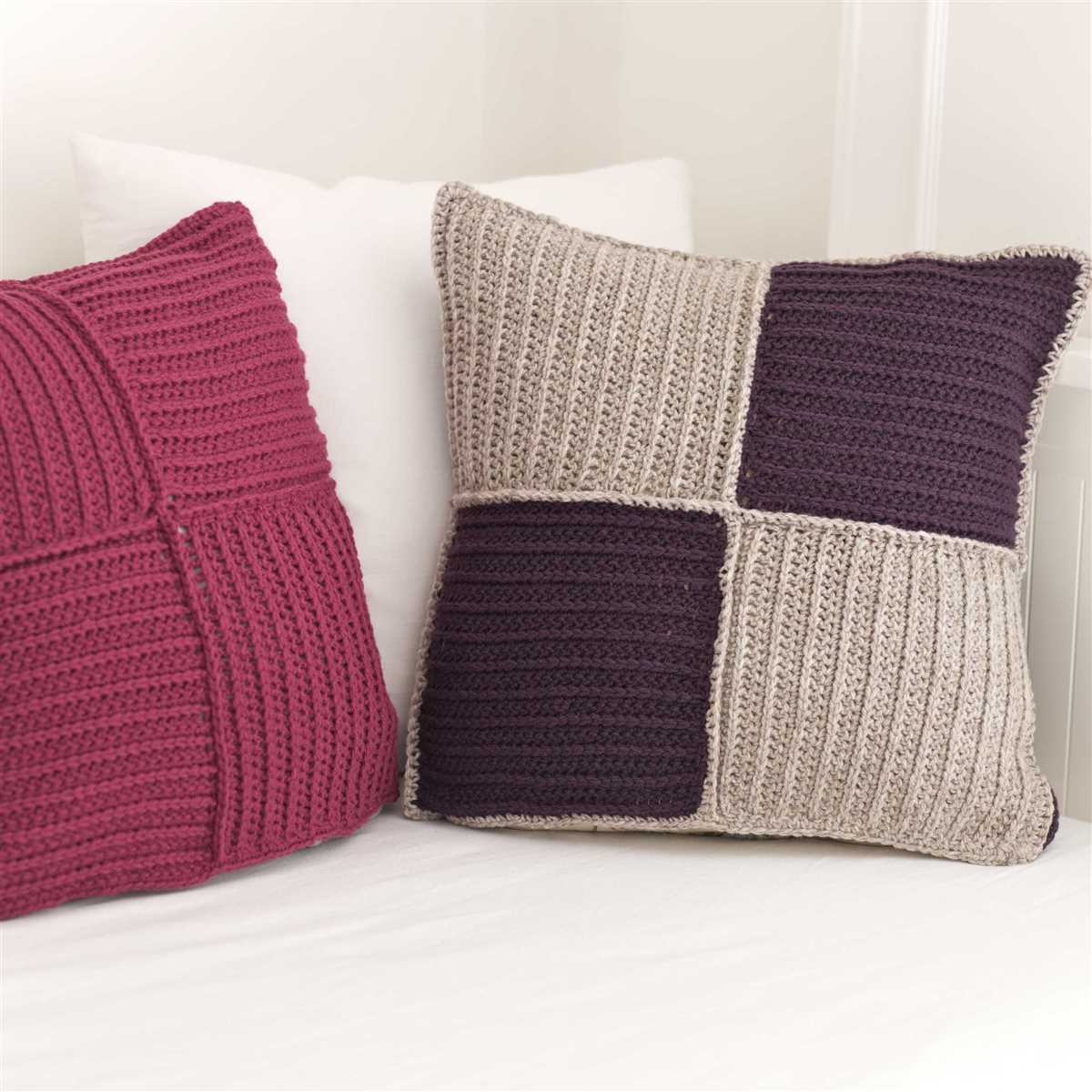
If you are looking to knit your own cushions, it’s important to have patterns that accommodate different sizes. Whether you want to make a small accent cushion or a larger one for your couch, there are patterns available to suit your needs.
For smaller cushions, a pattern for a 12-inch square cushion can be a great option. This size is perfect for adding a pop of color or texture to a chair or bed. There are various stitch patterns and designs available for this size, allowing you to get creative with your cushion.
If you prefer a larger cushion, you can opt for a pattern for a 16-inch square cushion. This size is ideal for a couch or a bigger chair. It provides more surface area for showcasing intricate stitch patterns or creating a cozy and comfortable cushion.
For those who like oversized cushions, a pattern for a 20-inch square cushion can be a great choice. This size is perfect for lounging or creating a statement piece on a bed or couch. With a larger cushion, you have more room to experiment with different stitch patterns and textures, creating a unique and eye-catching design.
No matter what size cushion you choose to knit, it’s important to select a pattern that matches your skill level and preferences. Whether you are a beginner or an experienced knitter, there are patterns available that will guide you through the process and help you create beautiful cushions for your home.
Personalizing your cushion with custom designs
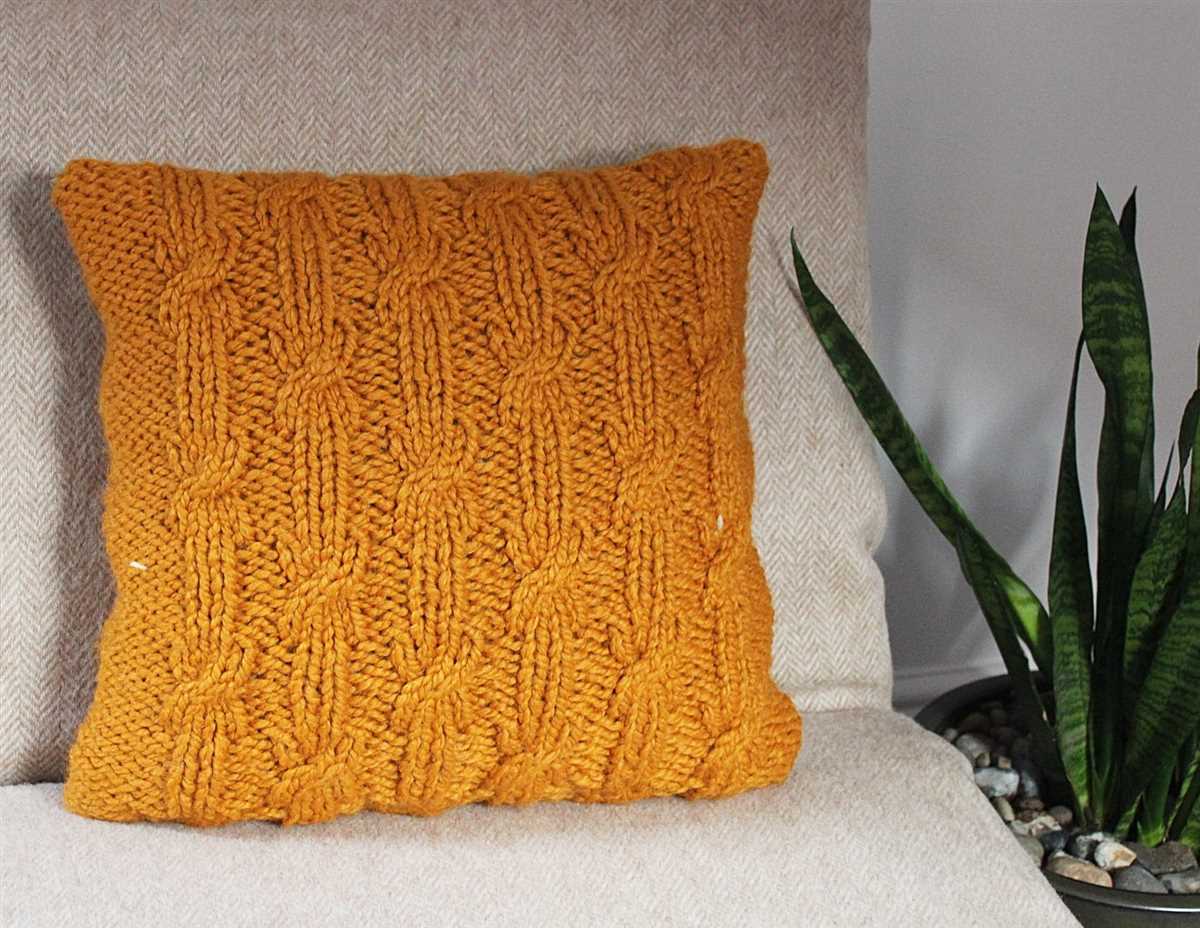
One of the most exciting aspects of knitting your own cushions is the ability to personalize them with custom designs. Whether you want to add initials, a favorite symbol, or a unique pattern, the possibilities are endless. Here are some tips and ideas for adding a personal touch to your cushion:
1. Embroidery
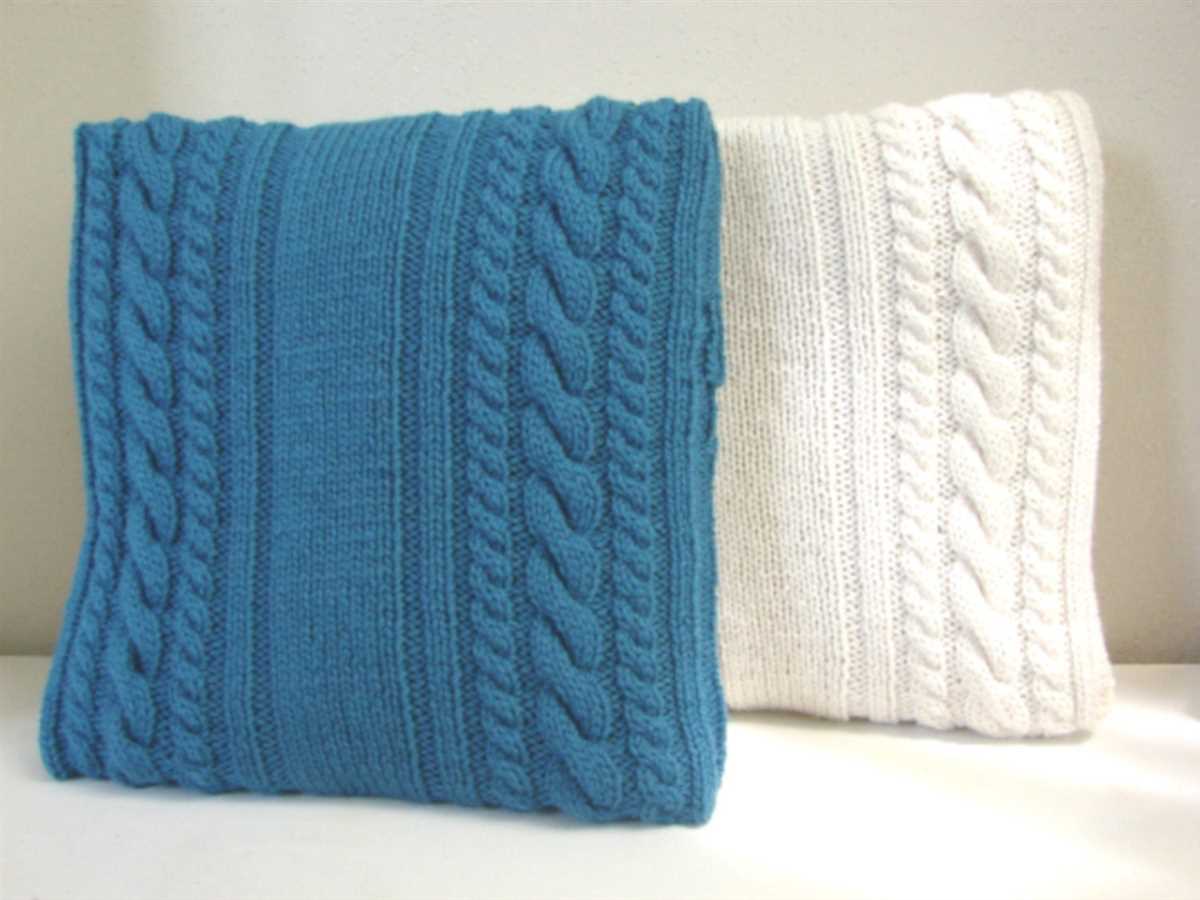
Embroidery is a popular choice for customizing knitted cushions. You can add intricate designs by using different stitches and thread colors. Consider adding your initials, a monogram, or a special motif that holds meaning to you. From flowers to animals to geometric patterns, there are countless embroidery designs to choose from.
2. Intarsia

Intarsia is a knitting technique that allows you to create blocks of color and intricate designs within your cushion. By using different colored yarns and following a chart or pattern, you can add images, patterns, or even words to your cushion. Intarsia is an advanced technique, so it’s a great way to challenge yourself and create a truly unique cushion.
3. Appliqué
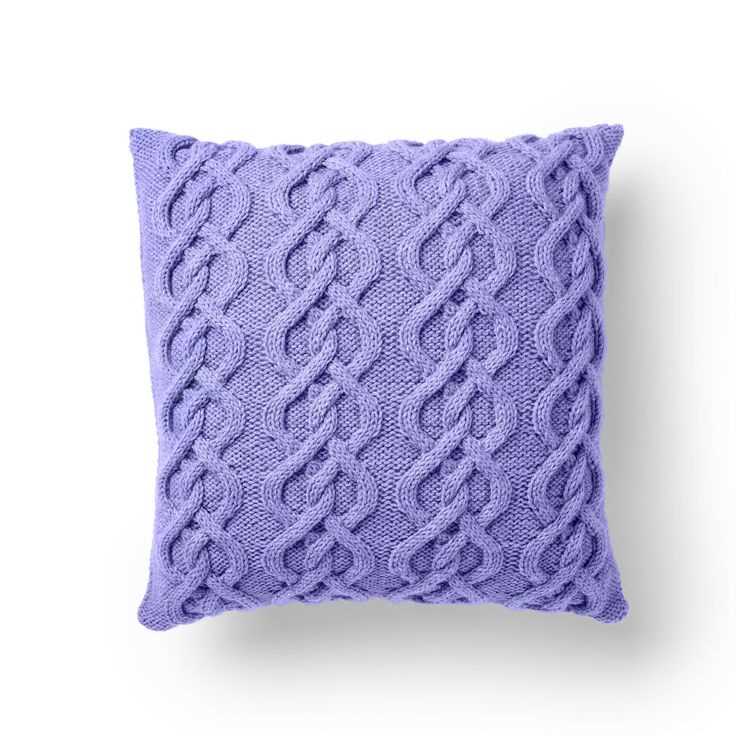
Appliqué involves attaching shapes or pieces of fabric to your knitted cushion. You can create appliqués using fabric scraps, felt, or even old clothes. Whether you want to add a simple heart shape or a more complex design, appliqué is a fun and creative way to personalize your cushion.
4. Knitted-in designs
If you’re a skilled knitter, you can incorporate custom designs directly into your cushion by using techniques like stranded knitting or lace knitting. Stranded knitting allows you to create patterns using multiple colors, while lace knitting involves creating delicate lace-like patterns. These techniques require careful attention to detail, but they can result in stunning and unique cushions.
Remember to consider the overall style and color scheme of your room when choosing custom designs for your cushion. Whether you opt for a subtle and elegant monogram or a bold and vibrant pattern, adding a personal touch will make your cushion truly one-of-a-kind.